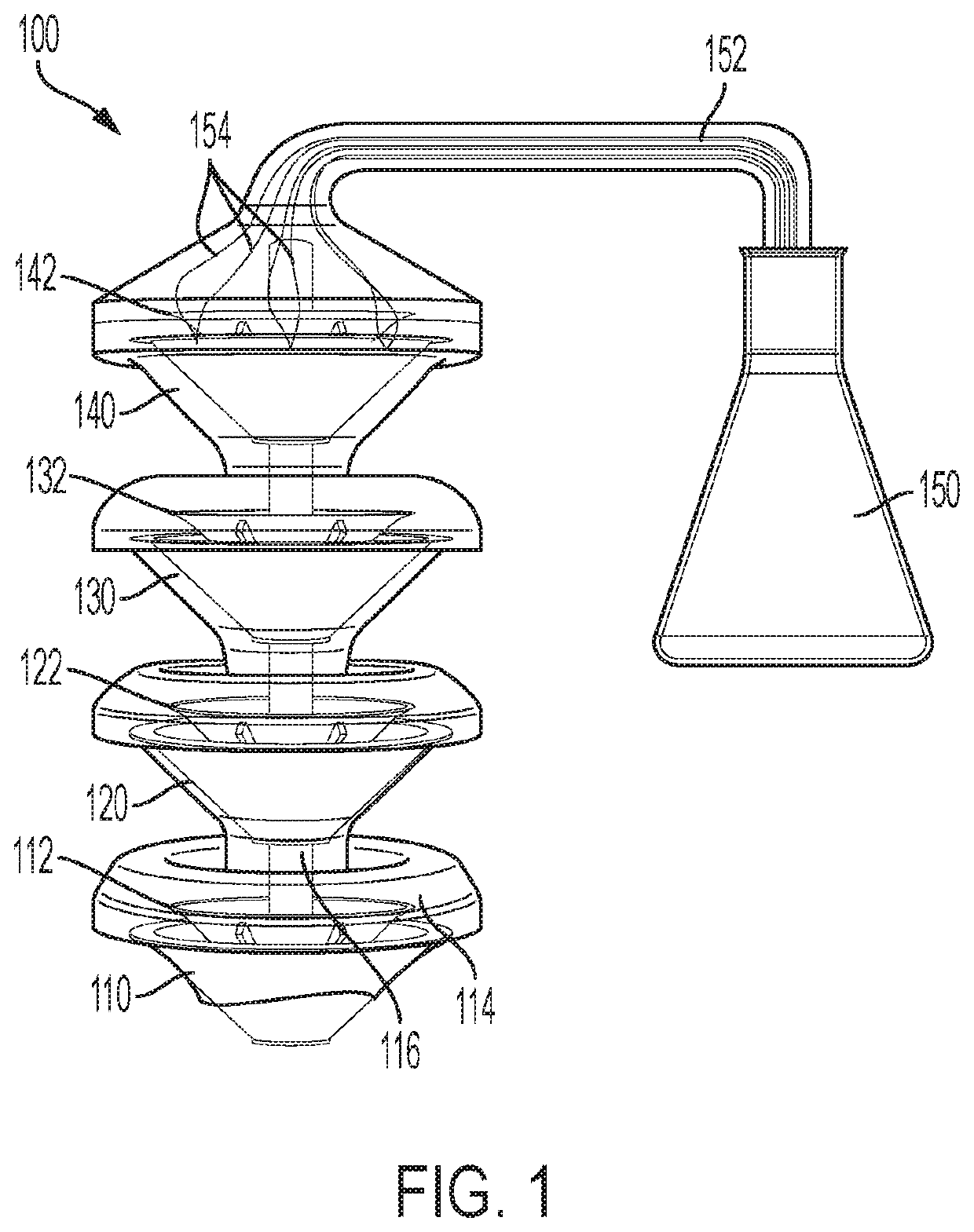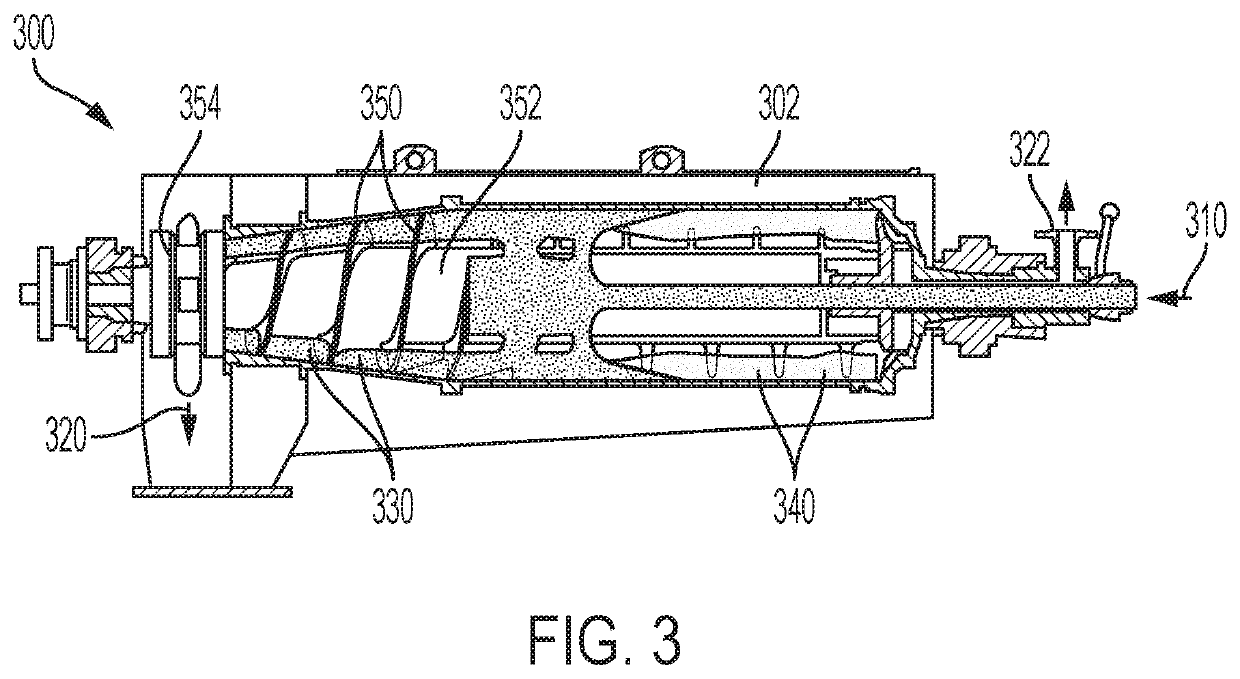Systems and Methods for the Preparation of Tablets of Botanical Extracts Including Tea
a technology of botanical extracts and tablets, applied in tea, tea substitutes, tea extraction, etc., can solve the problems of limited innovations to improve convenience, unappealing products, boiling hot water, etc., and achieve the effect of rapid dissolving, no additional waste to manage, and quick dissolution
- Summary
- Abstract
- Description
- Claims
- Application Information
AI Technical Summary
Benefits of technology
Problems solved by technology
Method used
Image
Examples
Embodiment Construction
[0025]In some embodiments, the novel process disclosed herein may include the steps of: (1) extraction / infusion, (2) clarification, (3) concentrate preparation, (4) degassing the concentrate, and (5) chunkification. Chunkification will be further described herein, but it may involve the freezing and then the removal of water from the concentrate. Through this process a quick dissolving tea tablet may be prepared that can produce a cup of tea when added to water and gently agitated. Further, the novel concentrate preparation steps used in certain embodiments of the present invention preserve the aromatics and nutrients from the tea leaves, leading to improved preservation of compounds thought to be beneficial to health and better taste. Although tea leaves are discussed throughout this disclosure, the use of other botanicals or herbs are within the scope of the present invention.
[0026]The initial step may be creating a tea extract through existing extraction technologies. In some emb...
PUM
 Login to View More
Login to View More Abstract
Description
Claims
Application Information
 Login to View More
Login to View More - R&D
- Intellectual Property
- Life Sciences
- Materials
- Tech Scout
- Unparalleled Data Quality
- Higher Quality Content
- 60% Fewer Hallucinations
Browse by: Latest US Patents, China's latest patents, Technical Efficacy Thesaurus, Application Domain, Technology Topic, Popular Technical Reports.
© 2025 PatSnap. All rights reserved.Legal|Privacy policy|Modern Slavery Act Transparency Statement|Sitemap|About US| Contact US: help@patsnap.com



